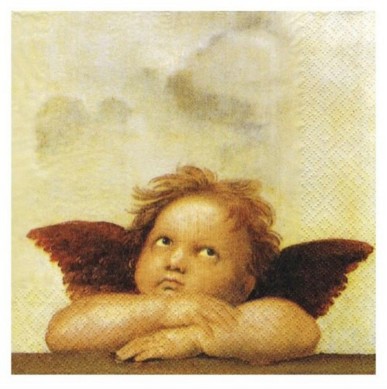(Familial bone dysplasia, cherubinism)
Autosomal dominant transmission with variable expressiveness of a mutation of the sSH3BP2 gene (4p16.3). Familial Progressive, non-painful mandibular hypertrophy (fibrocystic type on XRay) resulting in a symmetrical enlargement of the jaw and maxilla. Chubby facies with anomaly of the first dentition. It can be accompanied by hypertelorism or a lower ectropion of the eyelids if the floor of the orbit is pushed upwards (looking to the sky as the cherubs of the Renaissance paintings). Sometimes exophthalmia by invasion of the retrobulbar space. Some teeth are missing or fragile, and the tongue is displaced by the tumoral mass. Painless cervical adenopathies are often observed at the onset of the disease.
There is a progressive spontaneous regression during adolescence.
Histology: bone tissue is replaced by fibrous tissue that contains many giant multinucleated cells.

Anesthetic implications :
Difficult intubation and extubation. Protection of the eyes. Fragile theeth and midface bones. Sometimes obstructive sleep apnea.
Reference :
- Maydew RP, Berry FA.
Cherubism with difficult laryngoscopy and tracheal intubation.
Anesthesiology 1985 ; 62 : 810-2.
- Battaglia A, Merati A, Magit A.
Cherubism and upper airway obstruction.
Otolaryngol-Head-Neck Surg 2000; 122:573-4
- Ozkan Y, Varol A, Turker N, Aksakalli N, Basa S.
Clinical and radiological evaluation of cherubism: a sporadic case report and review of the literature.
Int J Pediatr Otorhinolaryngol 2003; 67:1005-12.
- Gentili M, Lebreil E, Bedhet N.
Chérubisme et anesthésie.
Le Praticien en Anesth-Réanim 2021 ; in press
Updated: September 2021